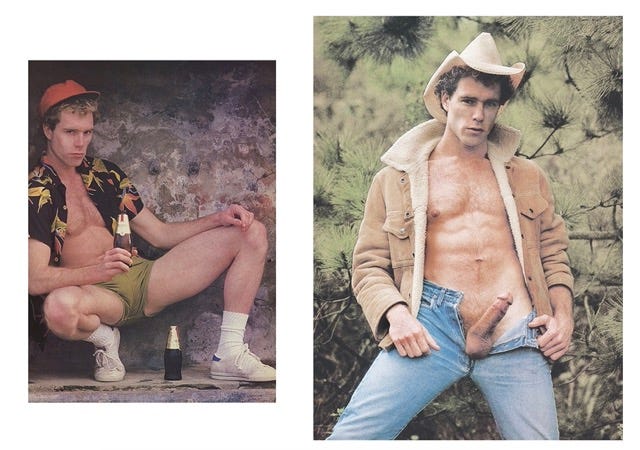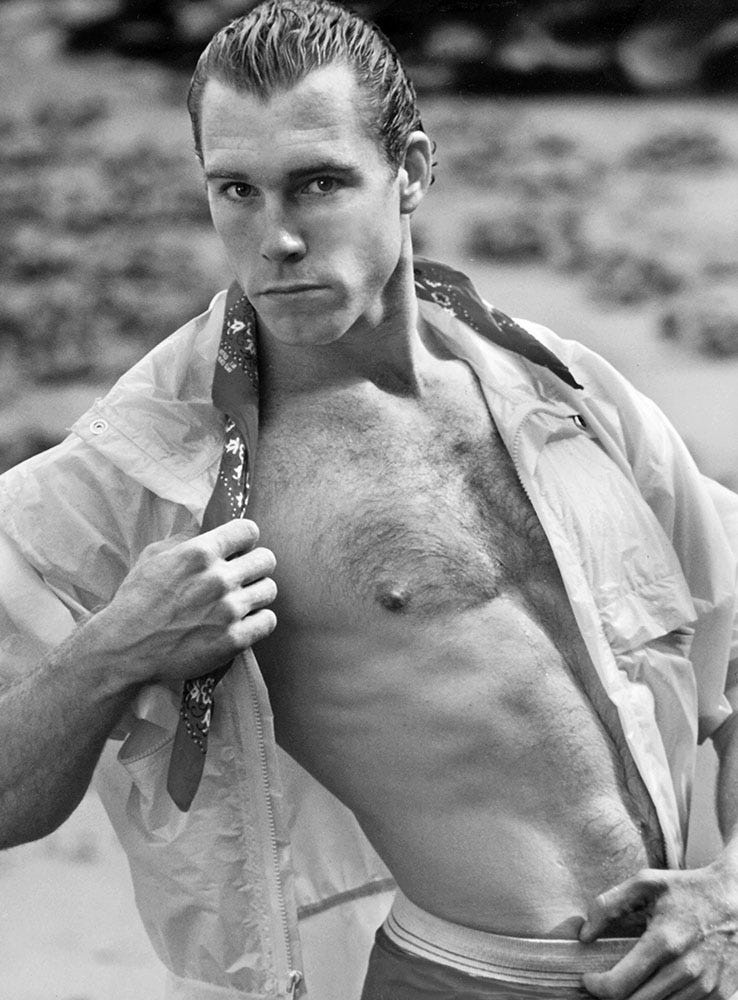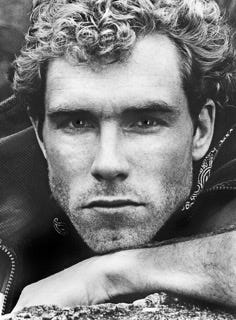The day after I posted Bonus Number 73 — Colt Classic? — I received an email from my longtime friend and colleague Dennis Forbes (a.k.a. Fred Bisonnes), a frequent contributor of photos, illustrations, and articles to Mandate, Honcho, and Playguy. Attached was a selection of his own photographs of Neal Shaw, the model pictured in the Mandate layout that I had reproduced.
What a difference! In front of Dennis’s camera, Neal looks like a different man. He’s obviously far more at ease, he seems to be having a good time. Whereas…well, there’s a reason I put a ? after Colt Classic. I didn’t run it because it was a typical Colt product. On the contrary, the closer I looked the more it seemed like an aberration. The model looked unhappy, the location — was it a real barn or a self-storage unit? — was unusual for Colt bossman Jim French, and it didn’t work. All those shadows threatened to swallow the poor model. I suspect that most viewers didn’t dwell on the layout.
Here’s what Dennis told me about Neal Shaw and the ADVOCATE Chocolate Bar (which you won’t find at the candy counter). David Goodstein, owner of Liberation Publications, which published The Advocate and later the magazine Advocate MEN, asked Dennis to photograph Shaw for the gay paper’s sixteenth-anniversary poster. “As I recall,” Dennis said, “the poster and a chocolate bar like the one pictured were sent to Advocate readers who renewed their subscriptions for two or more years.” That was in 1983.
The following year, Dennis photographed Neal Shaw for the second issue (November 1984) of Advocate MEN.
For an added bit of backstairs gossip from Dennis about his time with Liberation Publications (later LPI), see below.
Dennis Forbes: “When I was hired by David Goodstein as part of his initial editorial team, after he'd purchased The Advocate in December 1974, I held the title of production manager. I'd asked to be titled art director, but David said there hadn't been such for the old bar newspaper [which is how The Advocate began], so he didn't need an art director. After several issues, I took the liberty of changing ‘production manager’ to ‘art director’ after my name on the masthead, without first clearing this move with either editor John Preston or David Goodstein, the publisher.
“It was three or four more issues later that Preston stormed into the Art Room and demanded to know who'd given me permission to change my job title, as Goodstein had just noticed it and had chewed out Preston for ‘not having control of his staff.’ I was quickly called on the carpet in Goodstein’s corner office to face his rage. My self-defense was that, inasmuch as he had charged me with converting the magazine's format from a bar newspaper to a national gay news magazine in a tabloid format (a la Rolling Stone) and -- without any budget increase -- I had also been providing article illustrations and photography. I was therefore functioning as art director rather than merely a production manager. And why did he call my large workspace the Art Room rather than the Production Room?
“Red-faced Goodstein threatened to fire me for my ‘insolence.’ I told him to go right ahead, that he needed me more than I needed The Advocate. His response was simply, ‘What are you fucking standing there for? Get back to work! We have a deadline to meet!’ ”
Dennis was later promoted to associate publisher, and in 1984, as an independent contractor, he became editorial director of Advocate MEN for the first four issues, after which, until 1989, he was staff photographer (under his pseudonym, Fred Bisonnes).
Dennis’s resumé would stretch farther than Substack allows space for, so I’ll summarize by saying that as I recall those years Dennis Forbes was always a vital part of The Advocate and of its later magazine — a friendly competitor with my own.












